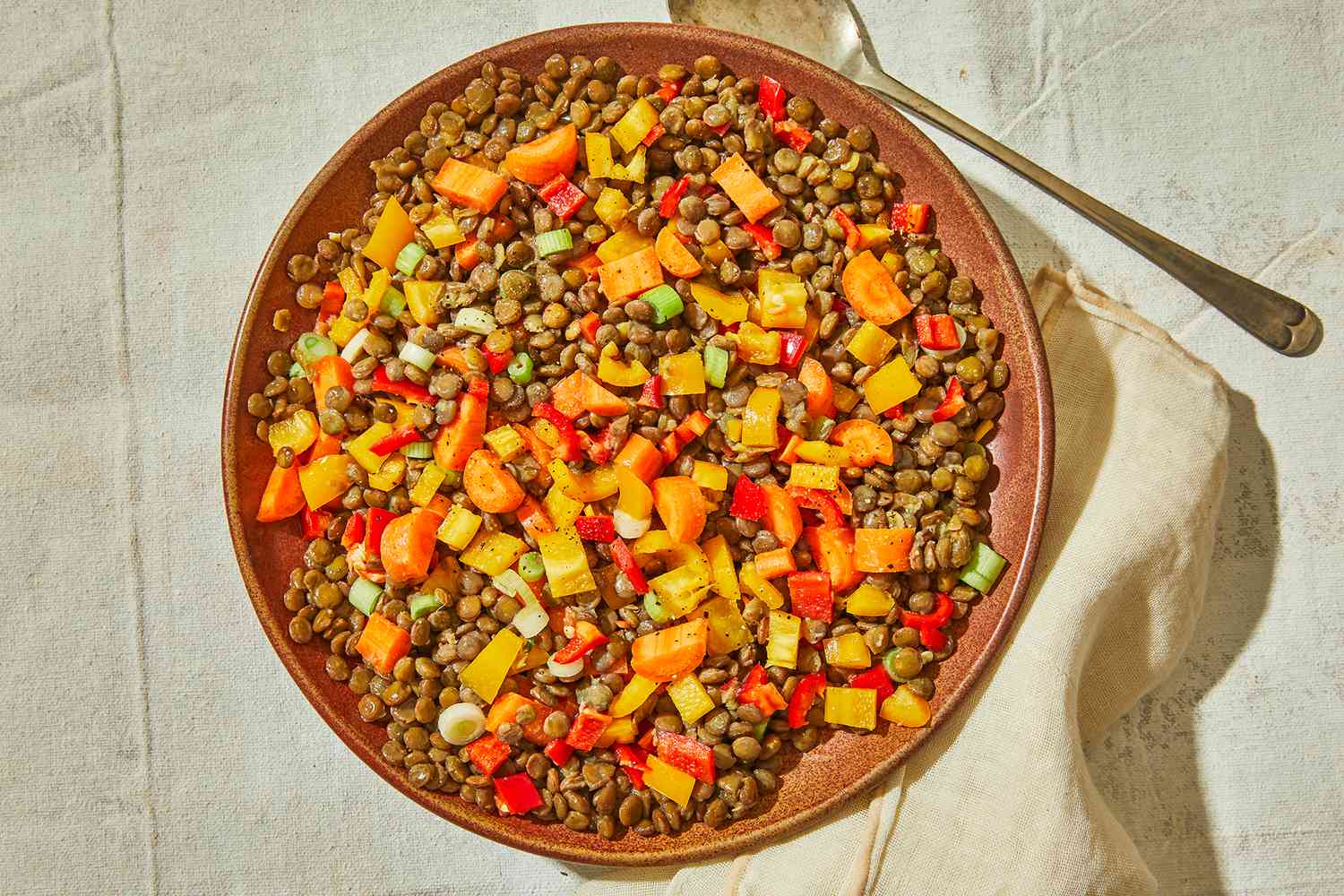A bag of dried lentils is one of those foods you bring home with good intentions, only to find it in your pantry weeks later and realize you still don’t know what to do with it. You can throw some into the soup, but it might be too hot for that. You could make a salad, but how long does it take? Can we eat them raw? Maybe they could be mixed into a smoothie for more protein? But is it even safe? (Hint: it doesn’t! Read below to find out why).
Illustrated recipe: Easy lentil salad
Here, we’ll talk about what lentils are, what makes them so healthy, and how to cook them properly to make them a tasty dish.
What are lentils?
Lentils are legumes, cousins of beans, chickpeas, soybeans and peanuts. The name “lentil” actually comes from the Latin word for “lentil”, which makes sense since a dried lentil looks like a small lentil.
Like many other legumes, lentils have been used in cooking for centuries and are believed to have originated in the Near East. But they are commonly grown (and part of the cuisine) throughout Europe, Asia and North Africa. This means you can find lentils in some of their most famous dishes, such as dal, Ethiopian stew, and Egyptian koshari. And because they have so far become widespread, there are a wide variety of types of lentils you can cook with. Here are some of the types:
Green lentils
Also called French lentils, green lentils keep well after cooking and have a nutty flavor. They are an ideal addition to a salad or on their own as a side dish. Be careful, they require a little more patience to prepare than the other varieties, taking almost 45 minutes to cook. This lentil stew with salsa verde is perfect for green lentils.
Red and yellow lentils
With a sweeter flavor, these lentils are commonly used in Indian and Middle Eastern dishes. Although they are quick to prepare, they are more likely to lose their texture after being cooked. Consider using them in stews, soups, or sauces, like this Saffron Red Lentil Soup.
Black Lentils
Also called beluga lentils, they have an earthy flavor that complements protein or meaty vegetables, like mushrooms, with a moderately low cook time of 25 minutes. Try them in bowls of braised black lentils and quinoa.
Brown lentils
Commonly used in North America, this is the variety you’ll often see staring at you in your pantry. With a sweet, earthy flavor and the ability to retain their texture after cooking, they can serve as a base for a veggie burger without overpowering the flavor of fresh vegetables. They serve as the base for these Roasted Root Vegetables and Greens over Spicy Lentils.
Nutrition of lentils
A budget-friendly, nutrient-dense option, lentils just might become one of your new favorite foods. Here is the nutritional breakdown of a 1 cup serving of cooked lentils, according to USDA:
- calories: 230
- Total fat: <1g
- Saturated fat: 0g
- Protein: 18 grams
- Carbohydrates: 40g
- Fiber: 16 grams
- Magnesium: 71mg
- Potassium: 731mg
- Iron: 6.5mg
- Selenium: 5.5 mcg
Besides their high protein and fiber content, which will keep you full for a relatively long time, there are a few other reasons why you might want to incorporate lentils into your diet. For example, they’re high in iron, a good source of phytochemicals, and have a low glycemic index, which can help manage your blood sugar.
Can you eat raw lentils?
The short answer? No.
Like other legumes, raw lentils contain a type of protein called lectin which, unlike other proteins, binds to carbohydrates and your body cannot digest them. This can lead to various reactions, such as bloating, vomiting, and diarrhea. Yeah.
Fortunately, lectins are heat sensitive and break down into more digestible components when cooked. Some legumes, like kidney beans, need to be boiled to completely break down the lectins. Unfortunately, most dried beans also need to simmer for 30 minutes to 3 hours, depending on the type and age of the bean.
But lentils generally cook much faster! Part of the reason is that they are smaller, but they also contain lower levels of lectin than other beans, although they are still considered lectin-rich.
Should lentils be soaked?
Many legumes, such as kidney beans, are usually soaked for hours, sometimes even overnight. Soaking helps neutralize lectins, which is important for legumes that have high hau counts.
Because lentils are sufficiently low in PHA, the legume does not need to be soaked for hours. If you wish, you can soak your lentils to aid digestion and for a shorter cooking time. Try soaking them in lemon juice or vinegar to prevent them from getting too soft. But if you’re pressed for time, pre-soaking isn’t necessary.
How to Cook Lentils
Start by rinsing your lentils to remove any debris, bring three cups of water to a cup of lentils to a boil, reduce the heat and simmer until tender, which will take about 15 to 20 minutes. Yes, it is as simple as that.
The essential
Lentils are a nutritious food that is low in fat and high in protein and fiber. Although they make a delicious addition to a soup, stew, or as part of a salad, you shouldn’t eat them raw. No matter what type of lentils you buy, you can easily cook them by boiling them in water on the stove.
